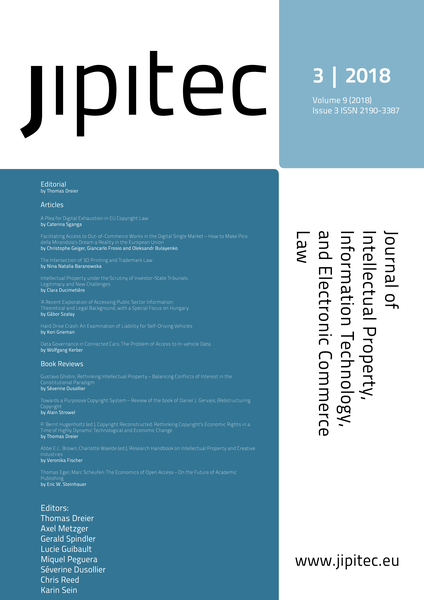The Intersection of 3D Printing and Trademark Law
Keywords:
3D printing, certificated files, counterfeiting, disruptive technology, platforms, registration of shapes, trademark law, trademark protectionAbstract
The paper discusses the possible impact of 3D printing technology on a trademark protection system and argues that, despite some obstacles, selling certificated 3D-printable files by companies can be a reasonable new approach in order to face up to the changes brought about by this new technology. 3D printing (three-dimensional printing, counter crafting), perceived by some as a disruptive technology, is an additive manufacturing technique to create objects by joining or printing layer upon layer of material based on digital models. Certain features of this technology such as democratization and dissemination of manufacturing process, participation of hobbyists, the role of CAD files, the possibility of introducing modifications into a file, and the worldwide scope of 3D printing based on the Internet connectivity may have an impact on trademark protection to a certain extent. The paper analyzes the cases of this impact and suggests possible solutions: selling 3D-printable certificated files by trademark owners; price regulation; and better educational programs on counterfeit goods. From the hard law perspective, the solution may lie in establishing clear rules of liability for intermediary online platforms.Downloads
Published
2019-01-29
Issue
Section
Articles




